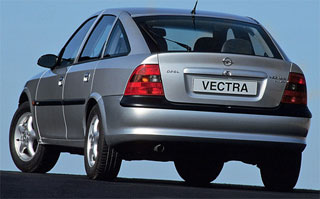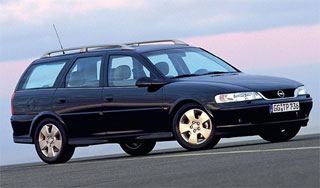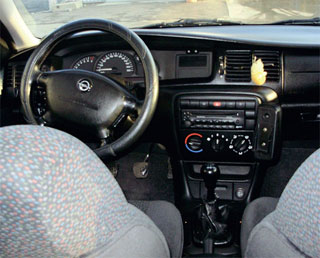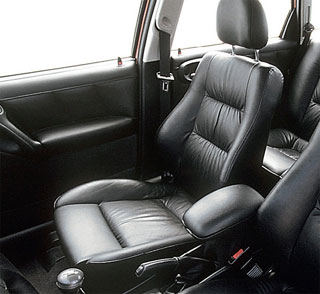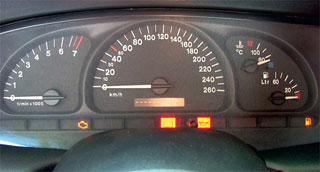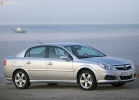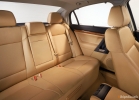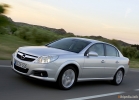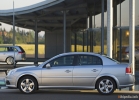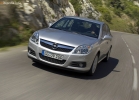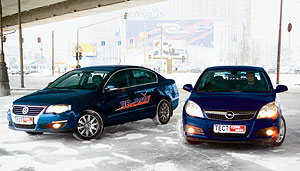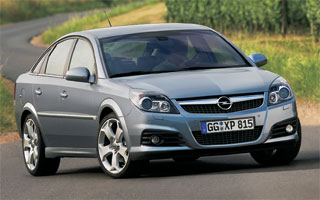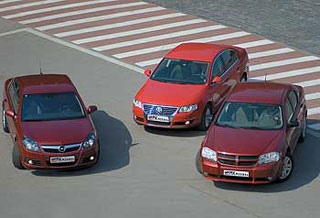Test drive Opel Vectra sedan 2005 - 2008 sedan
Overlooking Europe
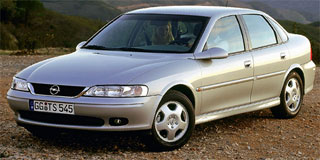 In Europe, family sedans call middle -class cars, not only because they are located between class A and F. A role was probably played by the desire of developers to please as many consumers as possible
In Europe, family sedans call middle -class cars, not only because they are located between class A and F. A role was probably played by the desire of developers to please as many consumers as possible Such machines really turned out to be an ideal solution: they are large enough to ensure high comfort, coupled with the respectful attitude of other participants in the movement, but at the same time they are able to maneuver in traffic jams, as well as place in a medium -sized garage. Add here a compromise suspension, which provides both control and smoothness, a normal, quite high -quality and convenient interior, as well as a proportional, but generally unfinished appearance, and you will receive a second -generation Opel Vectra (19952002). An exemplary (albeit for someone and insanely boring) a European car, which has well-stored the test of time. Yes, most of these machines are tired, but many are still quite suitable for everyday use.
The characteristic that is not exaggerating in relation to the appearance of the model: there are actually almost no outstanding elements, except for the rear view mirrors that are smoothly arising from the front wings. However, cars made in a conservative style become obsolete, as a rule, much slower than cars that seemed futuristic at the time of their debut. A look into the future sooner or later becomes irrelevant, while the classic never goes into circulation. However, for buyers of such machines, a variety of modifications is more important than the style, and in this case there are no questions to it: sedan, station wagon, hatchback choice of bodies are quite wide. True, the owners of the used Vectra have reasons for the disorder: the fact is that Opel of those years could not boast of exemplary resistance to corrosion, and if this feature is multiplied by the age of the car of this generation, then to put it mildly, the body panels are not always withstanding with honor Sandy attacks and exposure to reagents, the rear wheel arches are especially sensitive. Unfortunately, you can’t call an electrician to the troublesome either: it is subject to a variety of failures.
But the Creators of the second generation Vectra seemed to try to make a premium category for a car. Inside, let everything be modest, but very well, and in rich trim levels with light upholstery Vectra is completely luxurious. The finishing materials are quite decent, and at the same price with Volkswagen Passat, those years of Vectra will probably be better equipped. The picture is complemented by a good level of comfort, a completely acceptable volume of the salon (especially taking into account the fact that Vectra B is quite modest in dimensions), solid ergonomics, as well as high -quality soundproofing.
 Vectra’s calm driver will definitely not cause vivid emotions: the car will steer confidently and without unnecessary nervousness, the smoothness of the move is sufficient (on our roads the suspension may even seem harsh, what to do, the car was hidden under high -speed carbans, not tank training grounds, which are our roads) . The accelerated dynamics, as expected, directly depends on the installed motor. So, a 1.6-liter engine is barely enough for a family car, but with a 1.8-liter engine, things are more fun, and a 2.5 liter V6 is probably enough for most drivers (extreme sensations should not wait, but move in any conditions Quite confidently the unit allows).
Vectra’s calm driver will definitely not cause vivid emotions: the car will steer confidently and without unnecessary nervousness, the smoothness of the move is sufficient (on our roads the suspension may even seem harsh, what to do, the car was hidden under high -speed carbans, not tank training grounds, which are our roads) . The accelerated dynamics, as expected, directly depends on the installed motor. So, a 1.6-liter engine is barely enough for a family car, but with a 1.8-liter engine, things are more fun, and a 2.5 liter V6 is probably enough for most drivers (extreme sensations should not wait, but move in any conditions Quite confidently the unit allows). Be that as it may, the most reasonable choice for the city is one of the 4-cylinder units with a volume of 1.6 (75100 hp), 1.8 (116125 hp), 2 (136 hp) or) or) or) or 2.2 l (by the way, the latter has a chain in the drive of the timing). In the content, they are cheaper than 6-cylinder engines, and it is easier to repair them. And if you really want to have a power supply, then you should look at the 2.5-liter V6, which develops 170 hp. (There was a 2.6-liter engine, but it was not released for long, and it is very difficult to meet this version on sale).
However, for any power unit you will have to take care of: experts recommend changing oil after 7500 km, the remaining filters at every second then (by the same time, most likely, you will need to replace candles). The timing belt for all engines (except for a 2.2-liter, in which the belt is simply not provided) serves for 60 thousand km. However, there were cases when he was eager without reaching the treasured mark. And the consequences of a meeting of valves with pistons are not cheap.
The 2-liter engine showed himself especially problematic: with large runs, it suffers from many malfunctions, for example, the crankshaft sensor refuses, sticks the idle valve, etc. But for other power units, in particular, installed on cars manufactured after 1999, Drafts in the operation of the electronic throttle from equilibrium are characterized by dirt removes it. Usually simple cleaning is enough to eliminate malfunction, but prevention is better than any treatment, so you need to try to change the air filter more often, and, perhaps, problems can be avoided.
Service employees indicate that boxes, both with a 4-band automatic transmission and 5-speed mechanics, are extremely reliable. They rarely need maintenance: the oil in theory is flooded for the entire service life of the unit, and the adhesion of the manual transmission during normal operation is designed for a very long period (especially since its replacement is expensive). If some malfunctions occur in the machine, they are mainly connected with electronics.
While many competitors in the back in their models used a simple twisting beam, Vectra, the manufacturer equipped a multi -link suspension of a rather complicated design. By the way, it is tender enough: the rear floating silent blocks often fail, and in front levers, hinges often die earlier than they should be. The stabilizers' racks do not go long, only 30 thousand km. The rest of the details, fortunately, are quite durable: the ball of ball supports, as a rule, is at least 60 thousand km, shock absorbers and parts of the steering and completely demonstrate an enviable service life of more than 100 thousand km. The condition of the brakes depends on the driving style, but since the owners of Vectra people are usually calm, the front pads pass 1520 thousand km, the rear are 5 thousand km more (Vectra B has rear brakes), and the rotors themselves experience three sets of lining .
Looking at the torment of owners relatively modern Opel Vectra C, you involuntarily understand: in the 90s, not only Toyota, but also seemingly mediocre Vectra, did for centuries. In any case, although Vectra B, compared with today's European cars, shows consumer properties below the middle level (after the model of the last century), in operating qualities it will give a head of more fresh machines. Of course, this model cannot serve as an example of reliability, but because of this it does not become less worthy.
The advantages and disadvantages of the model
Advantages
Acceptable suspension settings, a wide selection of modifications, low prices.
Flaws
Low level of passive safety, coal suspension, narrow cabin.
Approximate price order (in Moscow), rub.:
150 thousand (Vectra 1995 with a 1.6 l engine)
170 thousand (Vectra 1997 with a 1.8 l engine)
200 thousand (Vectra 1998 with a 2 l engine)
210 thousand (Vectra 1996 with a 2.5 l engine)
235 thousand (Vectra 2000 with a 1.8 l engine)
300 thousand (Vectra 2001 with a 2.2 l engine).
